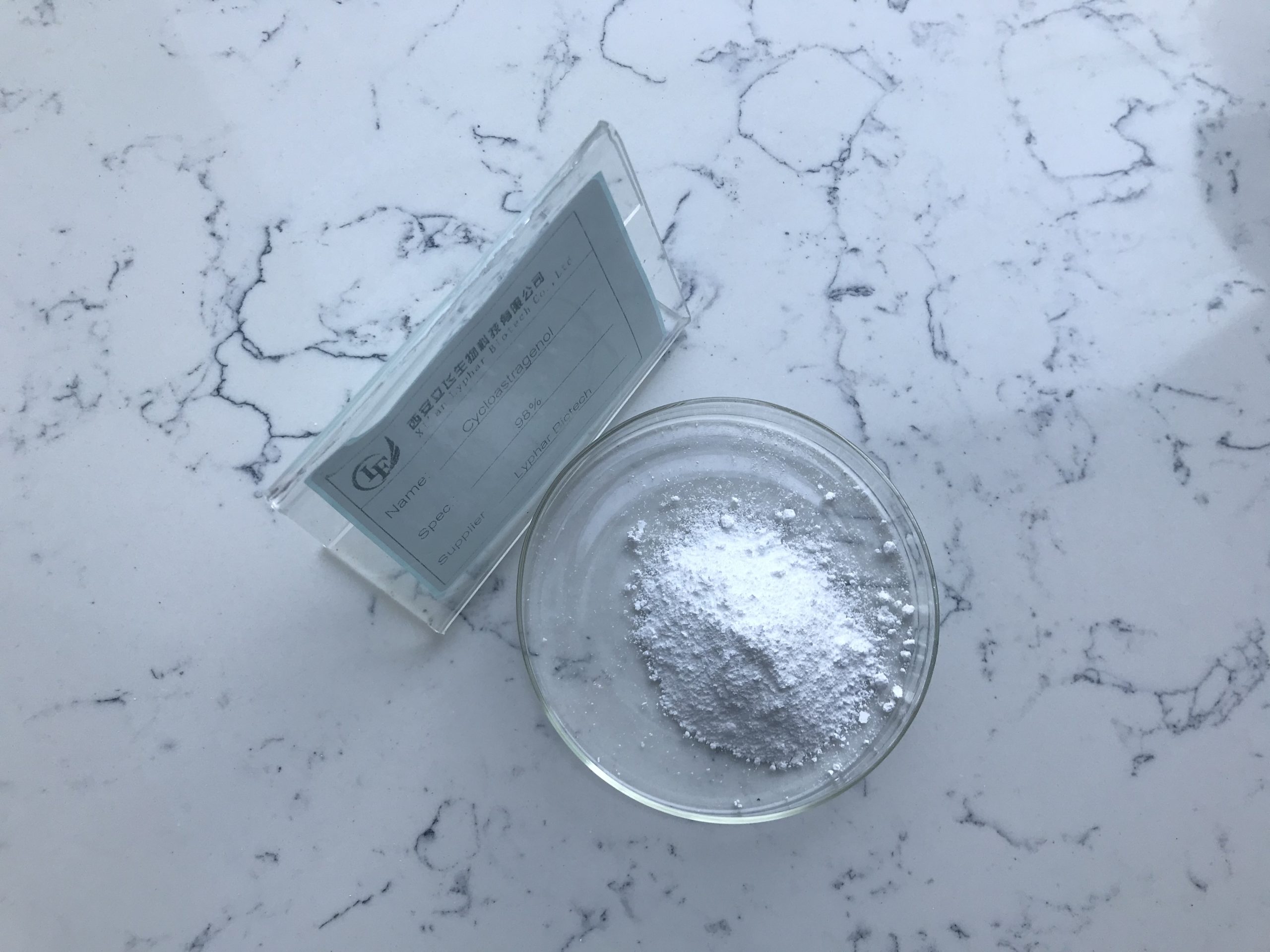Cycloastragenol (CAG) is a naturally occurring compound derived from Astragalus membranaceus, a plant that has been used in traditional Chinese medicine for its health-promoting properties. It is a derivative of Astragaloside IV, a saponin found in the roots of Astragalus species. Cycloastragenol has gained attention in recent years for its potential anti-aging effects and ability to activate the enzyme telomerase, which is linked to telomere maintenance and cellular longevity.
Origin of Cycloastragenol
Cycloastragenol is primarily sourced from Astragalus membranaceus, a plant native to Asia, particularly in China and Mongolia. The compound is extracted from the roots of the plant, which have been used in traditional medicine for centuries to boost immunity, combat fatigue, and promote overall vitality.

Properties of Cycloastragenol
- Telomerase Activation: Cycloastragenol has been most recognized for its ability to activate telomerase, an enzyme that adds repetitive nucleotide sequences to the ends of chromosomes, known as telomeres. Telomeres protect genetic material from degradation and prevent the loss of essential DNA during cell division. As cells age, telomeres shorten, leading to cellular senescence or death. Cycloastragenol has been shown to stimulate telomerase activity, which may help counteract the effects of aging at a cellular level.
- Antioxidant and Anti-inflammatory Effects: Like many compounds found in Astragalus membranaceus, cycloastragenol exhibits antioxidant properties, helping to neutralize free radicals that contribute to oxidative stress and aging. Additionally, it may have anti-inflammatory effects that could protect tissues from chronic inflammation, a factor in various age-related diseases.
- Immune System Support: Astragalus has long been used for its immune-boosting properties, and cycloastragenol is thought to contribute to this effect by enhancing the body’s natural defense mechanisms.
- Potential Anti-Aging: Cycloastragenol is often marketed as a supplement for anti-aging purposes. While there is some evidence suggesting it can extend cellular lifespan by activating telomerase, the broader effects on aging in humans are still under research and debate.
- Neuroprotective Effects: Preliminary studies suggest that cycloastragenol may have neuroprotective benefits, potentially offering protection against neurodegenerative diseases, although more clinical evidence is needed to confirm these effects.
Introduction and Commercial Use
Cycloastragenol was first identified and isolated from Astragalus membranaceus in the 1990s. Since then, it has gained significant attention in the supplement market, particularly within the context of anti-aging and longevity.
- Supplementation: Cycloastragenol is available as a dietary supplement, typically in the form of capsules or powders. It is often marketed as a supplement that can enhance longevity, improve skin health, and promote general well-being by supporting cellular health.
- Research and Clinical Studies: Although preliminary studies have shown promising results, the effects of cycloastragenol on human longevity, age-related diseases, and overall health require more extensive research. Most current evidence comes from in vitro studies and animal models, and human clinical trials are still limited.

Safety and Side Effects
Cycloastragenol is generally considered safe when taken in moderation. However, as with any supplement, there may be potential side effects, especially if taken in excessive doses. These could include digestive discomfort or allergic reactions, though these are rare. Long-term safety data is still lacking, and individuals with certain medical conditions or who are on medications should consult with a healthcare provider before starting supplementation.
Conclusion
Cycloastragenol is a promising compound derived from Astragalus membranaceus with potential benefits for cellular longevity, anti-aging, and immune support. While the scientific evidence regarding its efficacy and long-term effects in humans is still developing, it remains an area of active research and is a popular component of anti-aging and longevity supplements.
